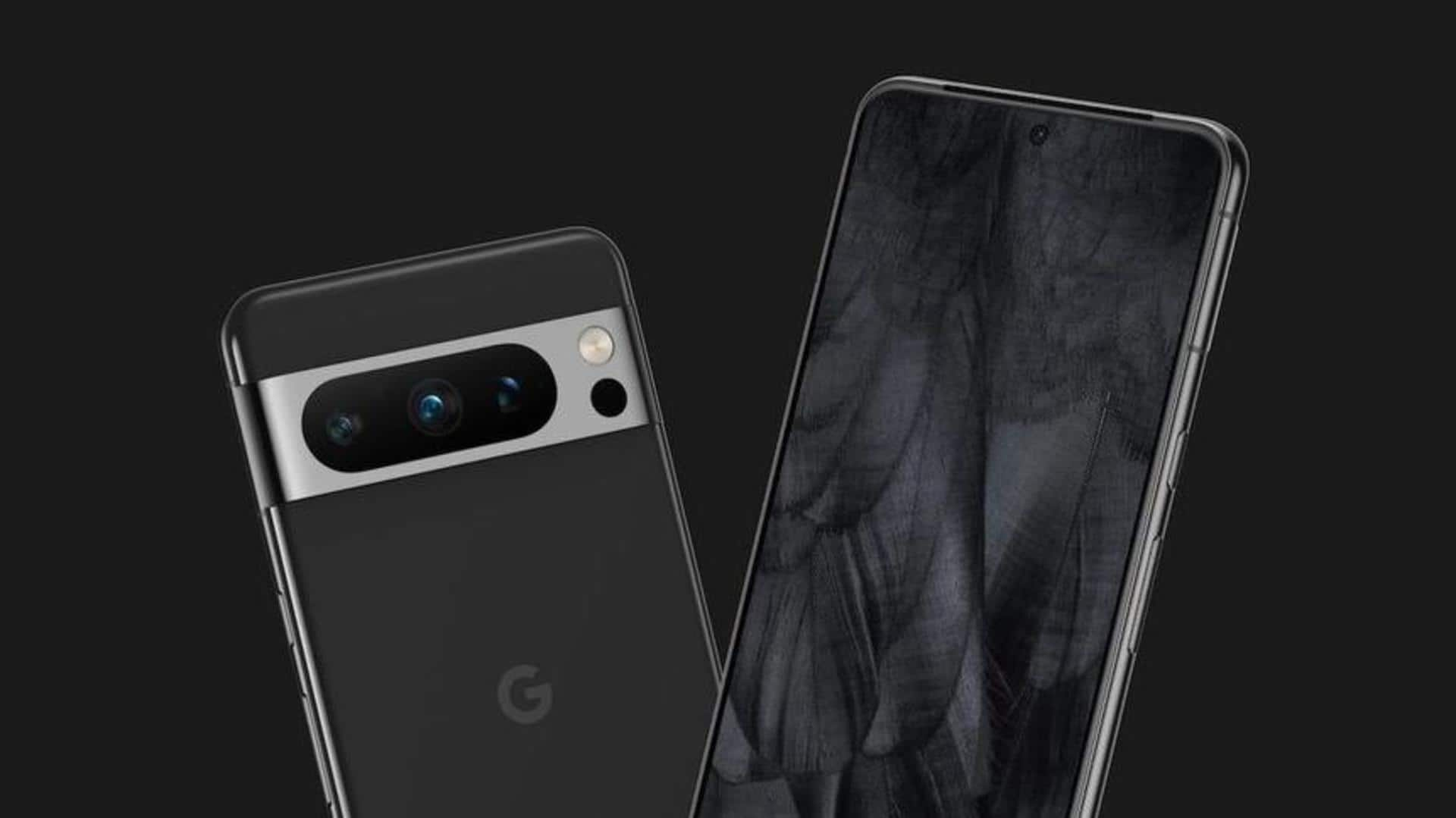
How Google Pixel 8 Pro will differ from 7 Pro
What's the story
Google is expected to introduce the Pixel 8 Pro (along with the vanilla Pixel 8) sometime in October. However, prior to its debut, a series of leaks revealed major details related to the upcoming flagship smartphone. The Pixel 8 Pro is getting a major design revamp, health-centric abilities, and more. Here's how it will differ from its predecessor, the Pixel 7 Pro.
Design
The device will offer a re-designed camera module
The Pixel 8 Pro will have a centrally-aligned punch-hole, rounded corners, aluminum frame, and under-display fingerprint reader. The device will settle for a flat screen as opposed to its predecessor, 7 Pro, which features a curved panel. Also, it'll sport a redesigned metal camera stripe, which will house triple cameras within a single cut-out, an LED flash, and an IR sensor for temperature measurement.
Display
More pre-defined refresh rates, higher peak brightness
As per the latest leak from Android Authority, Pixel 8 Pro will retain the 6.7-inch OLED display, but with a slightly smaller (1344x2992 pixels) resolution, instead of (1440x3120 pixels) on the 7 Pro. It'll get 490ppi pixel density—down from 512ppi. However, it'll have more pre-defined variable refresh rates including 5Hz, 10Hz, 30Hz, and 60-120Hz, and also higher peak brightness (1,600-nits v/s 1,000-nits) in HDR.
Cameras
A new primary camera will be on board
The Pixel 8 Pro will house a 50MP ISOCELL GN2 main sensor, instead of the GN1 available on 7 Pro, promoting brighter low-light imagery, faster shutter speeds, and reduced blur. Also, it will include 64MP IMX787 (Pixel 7a's primary snapper) as its ultra-wide shooter—replacing 12MP Sony IMX386. The device will retain 48MP Samsung GM5 (5x) periscope lens, and the 11MP Samsung 3J1 selfie camera.
More
The Pixel 8 Pro is getting a new ToF sensor
The Pixel 8 Pro will include an 8x8 ToF VL53L8 sensor from STMicroelectronics. Having a real LiDAR sensor is obviously better, but the new sensor in 8 Pro will still be a huge improvement. It is expected to make the autofocus much more accurate. To recall, the 7 Pro had STMicroelectronics' VL53L1 single-point time-of-flight (ToF) sensor to help with the autofocus.
Information
An IR sensor for temperature measurement will be there
The Pixel 8 Pro will house a Melexis MLX90632IR sensor at the back, which will allow for high-precision, non-contact temperature measurements using infrared. The tracked data will be processed by the Android Private Compute Core and stored locally on the device.
Internals
A Tensor G3 chipset will power the phone
The Pixel 8 Pro will be powered by the in-house-developed Tensor G3 chipset, which will feature a CPU block with nine cores—four Cortex-A510, four Cortex-A715, and a Cortex-X3. It will also have a Mali-G715 GPU and Google's Titan security co-processor. Expect it to deliver better performance compared to the 7 Pro with Tensor G2. The device will also support Ray Tracing.
Availability
Pixel 8 Pro could release in October
Google is likely to introduce the Pixel 8 series in October. In addition to the new Tensor G3 chipset, the devices will boot the upcoming Android 14 OS. The tech giant is also expected to introduce its second-generation Pixel Watch.